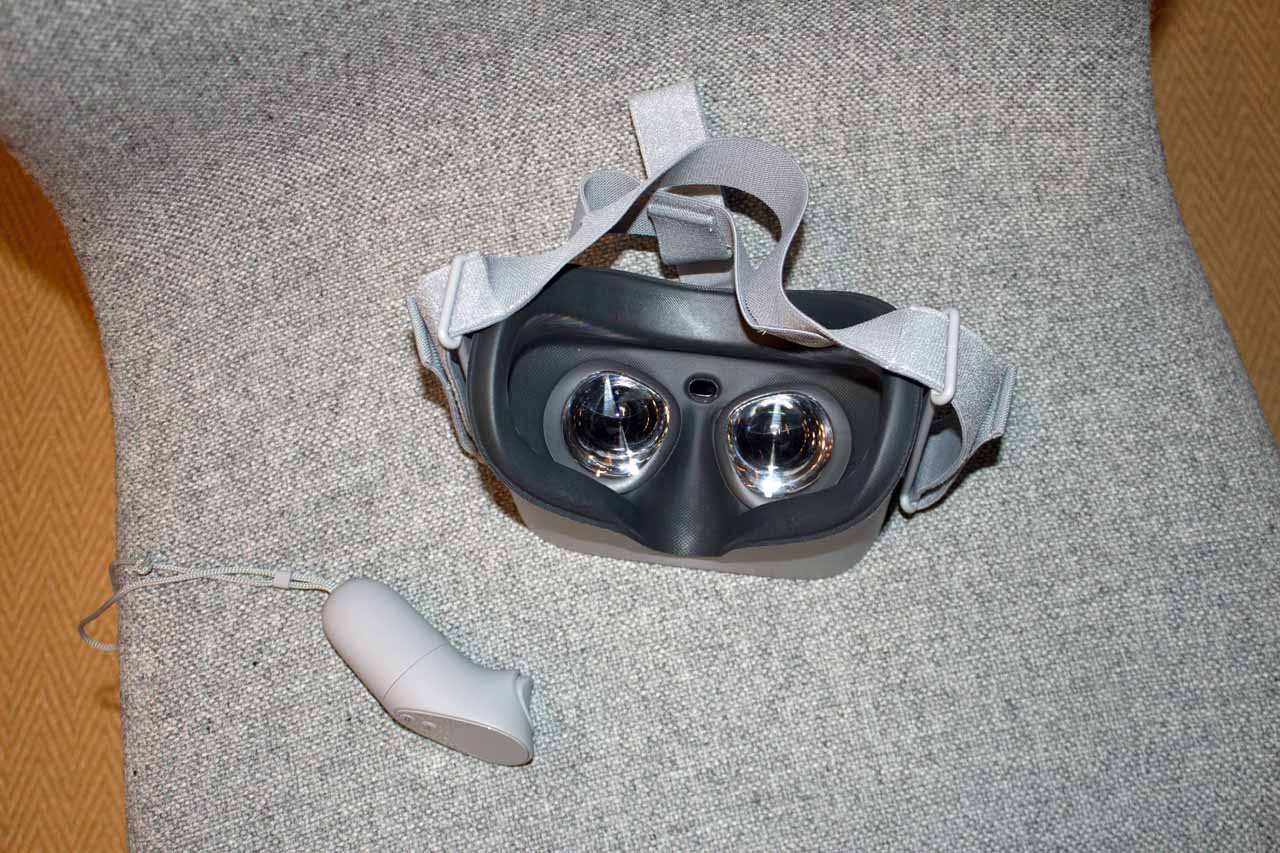Going Hands On With The Oculus Go At GDC 2018
Oculus has kept its upcoming Go headset shrouded in secrecy as it prepares for the device's formal launch, which is rumored to be at the F8 conference later this year, but that didn't stop the company from letting the press and the public test the new tether-less HMDs on the GDC 2018 show floor. We weren't given any technical details about the hardware--a company representative said it wants to keep them under wraps because the Go isn't shipping yet, though we find that claim suspect, considering the details we gathered during Oculus Connect 4 last October.
On to the demo. The Go awaited us on a chair, with three straps affixed to the top and sides of the device to ensure a snug fit for the 3DoF device. The Go itself is simple and only has a power button and volume adjustment on the top, and after a few quick strap adjustments, the light and well-balanced headset perched snugly on our head.
We played the Anshar Online cross-platform game against other players outfitted with the Rift, and the attendant explained that the game should play similarly on both devices. The attendant slipped the controller into our outstretched hand, and we flew off with no instruction. Luckily, the controller, almost too small for our hand, is simple and intuitive.
We found the back and home buttons, which are placed to the rear of the touchpad, quickly. That ejected us from the game for a second, but with that in mind, we returned to the battle.
We fired our guns with the pullback trigger on the front of the controller as we blasted through an asteroid field, relentlessly hunting other players, and pressing down on the large touchpad on the top of the device fired our missiles. We swiveled around on our stool quickly as another player pursued us through dizzying spins around plunging asteroids, cognizant that we didn’t have to worry about a tether snagging our travel.
The headset is lightweight and responsive, but we noticed heat emanating from the front and side of the device when we first picked it up. That seemed to intensify as the game went on and became bothersome after a few minutes. The attendant pointed out that the device is known to get “warm” and that some players would sweat enough to fog up the lenses if they played for too long. This is obviously a known issue, and one Oculus can hopefully improve, but it isn’t entirely surprising considering it is pre-release hardware.


The display was bright and vivid, but there were times when our spaceship would disappear, instead replaced by a vague outline. Overall the game was smooth and fast, which is amazing considering the headset doesn’t require the full horsepower of a gaming PC like the Rift or a smartphone like the Gear VR.
Get Tom's Hardware's best news and in-depth reviews, straight to your inbox.
Unlike larger HMDs, the Go doesn’t have headphones that clap down over your ears. Still, the game's sounds were remarkably clear through the small speakers on the side of the device, even with the constant drone of the show floor noise around us. We played for several minutes that felt like an eternity as we flit through power-ups and health regenerators, but soon the game came to an end.
Overall, it was an impressive outing with the Go, and while we didn’t have enough time with the device to come to a solid verdict, we know that it’s going to be hard to beat for only $200.

Paul Alcorn is the Editor-in-Chief for Tom's Hardware US. He also writes news and reviews on CPUs, storage, and enterprise hardware.

